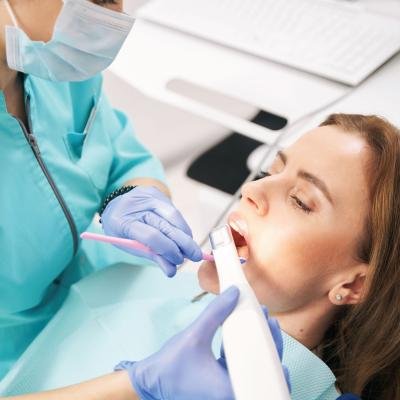Orthodontic care has undergone remarkable changes over time, with clear aligners becoming a favored alternative to traditional braces. These aligners provide a subtle and comfortable way to correct dental misalignments. Today, clear aligners are leading the future of orthodontics thanks to benefits like improved aesthetics, comfort, better oral hygiene, and dietary freedom compared to fixed braces. This article summarizes the essential steps in planning clear aligner treatment:
- Initial consultation and diagnosis
- Case selection
- 3D treatment planning
- Patient education
- Progress monitoring
Diagnosis and Assessment
1. Case Selection Criteria
Clear aligners are among the most sought-after orthodontic treatments by patients. However, dental professionals must carefully select cases suitable for aligner therapy to ensure patient satisfaction. Ideal cases include mild crowding, spacing, and narrow arches. More complex malocclusions such as deep bites or rotations require thorough understanding of aligner biomechanics and movement staging to guarantee effective outcomes. A detailed treatment plan follows comprehensive evaluation.
2. Medical and Dental History
A thorough review of a patient’s medical and dental background is crucial. Since aligners may not be suitable in certain conditions, this step helps clinicians identify any health issues that could affect the treatment approach.
3. Patient Expectations
Managing patient expectations is vital. Dental practitioners should clearly communicate the achievable outcomes of aligner therapy and maintain transparency throughout the treatment journey to ensure patient satisfaction.
4. Comprehensive Orthodontic Evaluation
This includes analyzing tooth alignment, jaw relationships, and facial profile. Evaluating periodontal health and occlusion helps detect functional issues that may influence the treatment plan.
5. Clinical Examination (X-rays, Scans, Impressions)
Intraoral scans offer a 3D view of the teeth’s position relative to one another, while dental X-rays provide insights into bone health and root positioning. These diagnostic tools allow for precise treatment planning.


6. Digital Smile Design and Treatment Simulation
Advanced software creates virtual models of the expected treatment outcome, helping orthodontists and patients visualize goals and map tooth movements to refine the treatment plan.
Clear Aligner Treatment Planning: Goals
Choosing a Reliable Aligner System
Selecting a trusted aligner provider ensures access to quality materials, technology, and professional support throughout the process.
Importing Patient Data
The treatment begins by uploading patient records such as intraoral scans, impressions, and photos into case management software.
Setting Treatment Objectives
Clinicians define goals like aligning teeth, closing gaps, correcting rotations, or adjusting bite issues.
Creating Virtual Setups and Tooth Movements
Using specialized software, orthodontists plan the sequence and timing of aligner changes, allowing visualization of treatment progress and fine-tuning as needed.
Attachments and Advanced Techniques
In complex cases, attachments may be added to facilitate controlled tooth movements, improving predictability and efficiency.
Refinements and Mid-Course Adjustments
Continuous monitoring allows orthodontists to make necessary modifications or add extra aligners to ensure treatment stays on track.
Monitoring, Education, and Communication
Regular Follow-Ups
Periodic check-ups enable tracking of progress and timely adjustments.
Patient Education
Clear communication about treatment duration, possible discomfort, speech changes, and oral hygiene is essential. Patients should understand their critical role in compliance to achieve the best results.
Managing Common Issues
Patients may experience mild soreness or speech changes early on. Addressing concerns promptly improves comfort and adherence.
Case Completion and Retention
After finishing active treatment, patients transition to retention to maintain results. Options include:
- Removable Retainers: Easy to clean and wear, customized to fit.
- Fixed Retainers: Bonded permanently to teeth, requiring careful hygiene.
Wearing retainers as directed and attending follow-ups ensures long-term success and patient satisfaction.
Conclusion
Effective clear aligner treatment planning is key to delivering outstanding orthodontic results. Through thorough assessments, goal setting, and utilizing advanced digital tools, dental professionals can create tailored plans that meet each patient’s needs. As this treatment modality advances, incorporating clear aligner therapy into practice enables clinicians to transform smiles and promote better oral health.

